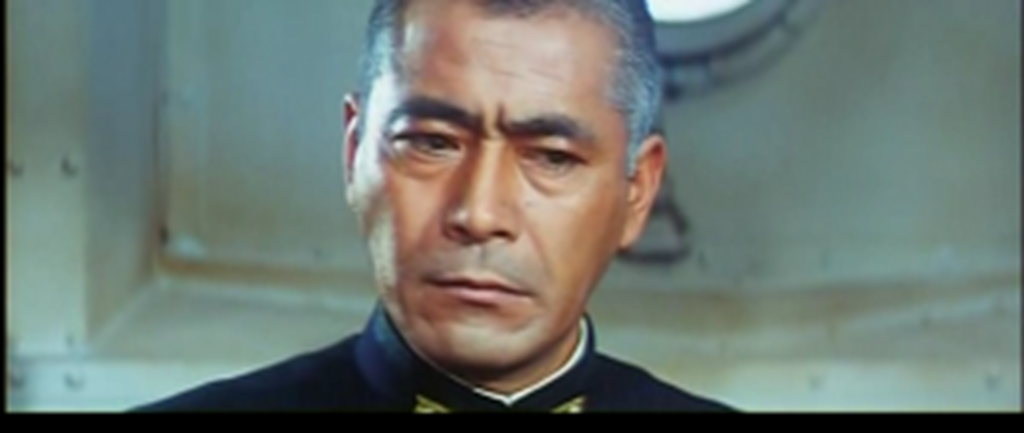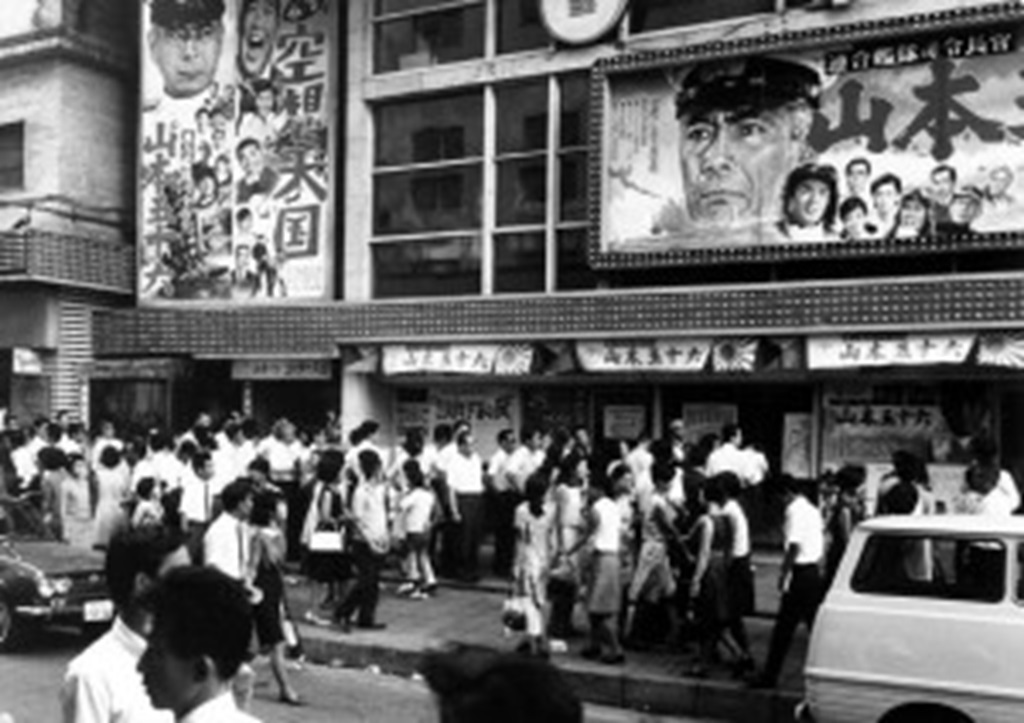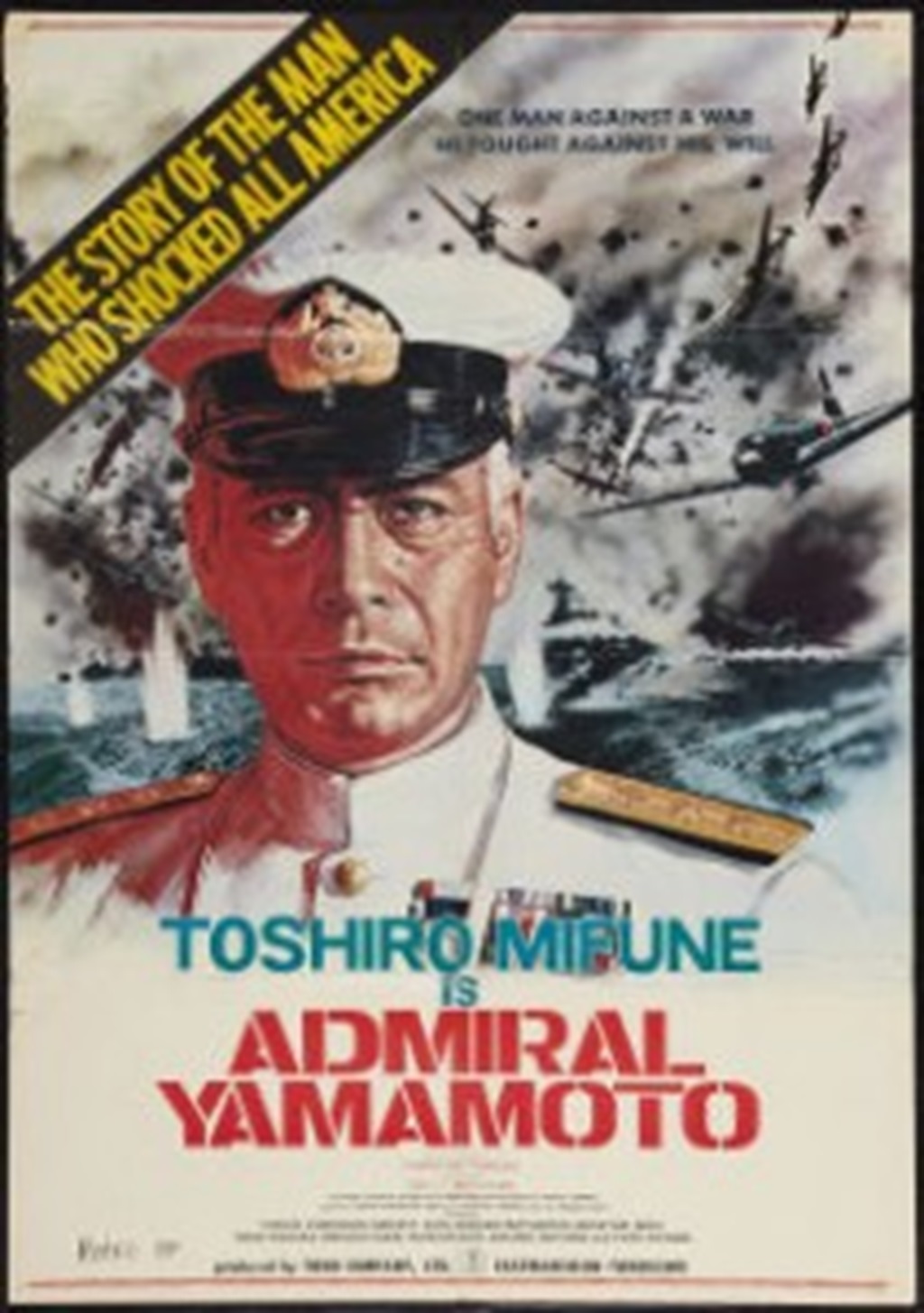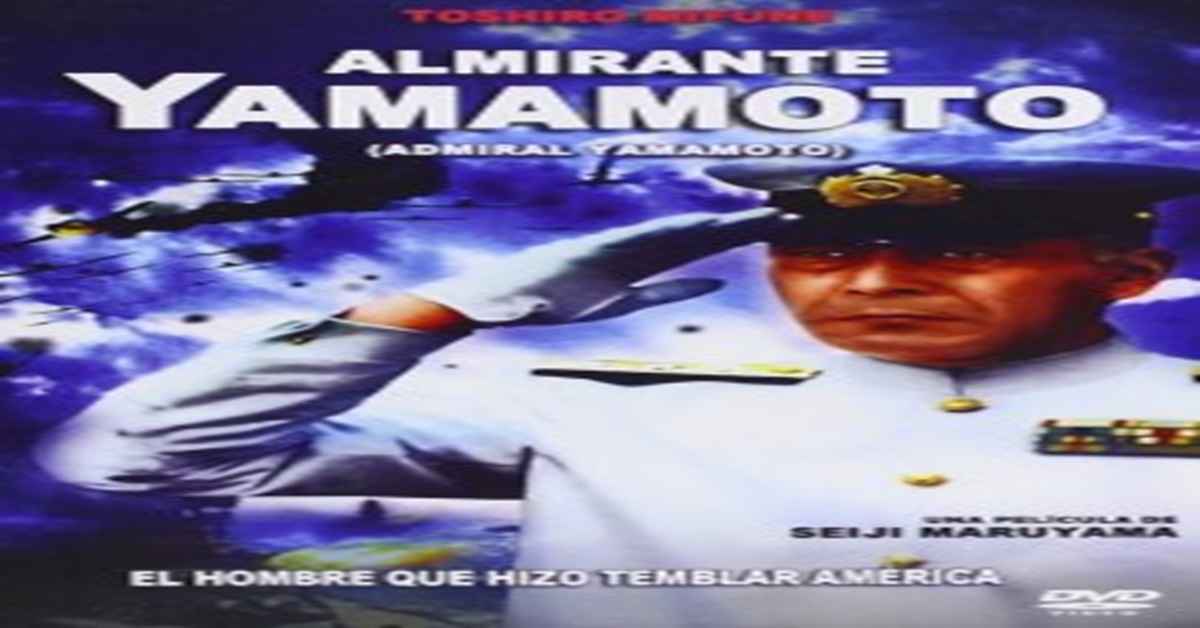The movie “Admiral Yamamoto” is part of a series of war films made by Toho Studios in Japan, known for its intricate special effects.
Unlike other war films, this movie is a biopic of Isoroku Yamamoto, a respected figure in Japanese history.
The film portrays Yamamoto’s opposition to Japan’s war with the United States despite his involvement in the attack on Pearl Harbor and Japan’s early successes in the war.
Postwar Japanese movies about World War II typically fall into four categories.
Some attempt to sanitize Japan’s militarists and their responsibility, while others depict the war as a tragic period where Japan caused immense harm.
Some films take a grimly comical and cynical approach.
Toho specialized in producing large-scale epics similar to American war movies but with a balanced portrayal of Japan’s bitter reality and ultimate downfall.
One of the notable films in this genre is “Storm Over the Pacific,” a significant production co-starring Toshiro Mifune. Mifune, who played a real-life admiral in the film, went on to portray Isoroku Yamamoto in later productions.
The director of “Storm Over the Pacific,” Shue Matsubayashi, brought a sense of authenticity to his war movies, having been an officer in the Japanese Imperial Navy himself.
DVD Review: Admiral Yamamoto
The production of “Admiral Yamamoto” in 1968 coincided with a decline in domestic box-office figures in the Japanese film industry, mainly due to the rising popularity of television.
Akira Kurosawa’s involvement may have influenced the movie’s creation in the ambitious project “Tora! Tora! Tora!” which garnered significant attention despite Kurosawa’s subsequent dismissal from the production.

Toho’s decision to produce the film “Admiral Yamamoto” amidst the circumstances might not have pleased Akira Kurosawa, particularly with Toshiro Mifune in the lead role, alongside other actors, writers, and composers closely associated with Kurosawa.
The film presents a mixed portrayal of Admiral Yamamoto, with Mifune’s role being somewhat reverential, limiting his character’s depth.
The movie effectively integrates various aspects of Yamamoto’s personality, such as his love for gambling, his passion for calligraphy, and his naval strategies.
However, it significantly omits any reference to Yamamoto’s private life, including his family, which could have humanized the character.
Additionally, the film seems to downplay Yamamoto’s contributions to Japan’s militarism, as it portrays a staff officer, rather than Yamamoto himself, delivering and advocating for the proposal to attack Pearl Harbor, potentially minimizing Yamamoto’s responsibility for the attack’s consequences.
The movie opens with a scene in 1939 Japan, where Yamamoto enjoys a boat ride, showcasing his playful nature.
However, the absence of any reference to his family or personal life hinders the humanization of the character.
Furthermore, the portrayal of Yamamoto’s contributions to Japan’s militarism appears softened, as the film depicts a staff officer advocating for the Pearl Harbor attack, possibly minimizing Yamamoto’s responsibility for the consequences.

In line with most other Toho war films, a significant portion of the film focuses on a younger supporting character, typically portrayed by an up-and-coming Toho star.
In the film “Admiral Yamamoto,” numerous male actors under contract to the studio and a few prominent independent names are featured.
The film boasts a large ensemble cast featuring actors familiar to kaiju eiga fans.
Additionally, the movie includes female roles portrayed by Yoko Tsukasa and Wakako Sakai, with narration provided by Tatsuya Nakadai.
This approach aligns with the established formula seen in previous successful Toho war films, albeit with a focus on Admiral Yamamoto.
The film’s budget may have been affected by declining attendance figures, leading to the extensive use of stock footage from earlier successes, mainly depicting the attack on Pearl Harbor and the Battle of Midway.
While Toho had previously utilized stock footage to a lesser extent in its giant monster movies, this reliance on past footage was unprecedented for “Admiral Yamamoto.”
The film prominently features special effects sequences, including a dramatic scene involving dropping food barrels off the coast of Guadalcanal, where enemy fighters attack a light cruiser transporting the food, ultimately sinking it.
These effects shots are a sophisticated blend of miniatures and well-executed mattes, showcasing the department’s exceptional work in a Toho war movie.
Furthermore, for the film’s climax, Tsuburaya’s team recreated the downing of the bomber carrying Yamamoto over Bougainville.
This sequence closely aligns with historical records of Yamamoto’s death, and the miniature effects are depicted in a poetic and cinematic manner, surpassing most live-action scenes in their stylized presentation.

Admiral Yamamoto has been released on DVD by an unexpected source, Spain’s Tema label, alongside the simultaneous release of Storm Over the Pacific, Wings Over the Pacific, and others.
The DVD offers excellent value at just 8.25 Euros (USD $11.23), compared to the usual $50-$65 charged by Toho Video for domestic DVDs, which often lack English subtitles.
This DVD presentation includes 2.0 Dolby Digital mono in Japanese and Castilian Spanish, complementing Castilian Spanish and English subtitles.
While the English subtitles have some errors, such as typos and occasional missing lines of dialogue, overall, the quality is considered decent.
The region 2/PAL video transfer, 16:9 enhanced and thus preserving the original CinemaScope aspect ratio of 2.35:1, is surprisingly good.
Extras include a photo gallery and an original trailer.
On a scale of Excellent, Good, Fair, and Poor,
Admiral Yamamoto rates:
Movie: Very Good
Video: Very Good
Sound: Good
Supplements: Photo gallery, trailer.
Deaf and Hearing Impaired Friendly? YES; Subtitles: English and Spanish
Tema Distribuuciones
1968 / Color / 2.35:1 CinemaScope / 130 min. / Street Date April 9, 2013 / Euro 8,25
Starring Toshiro Mifune, Yuzo Kayama, Yoko Tsukasa, Toshio Kurosawa, Makoto Sato, Daisuke Kato, Masayuki Mori, Wakako Sakai, Koshiro Matsumoto..
Cinematography Kazuo Yamada
Art Director Takeo Kita
Music Masaru Sato
Written by Shinobu Hashimoto, Seiji Maruyama, and Katsuya Susaki
Produced by Tomoyuki Tanaka
Special Effects Director Eiji Tsuburaya
Directed by Seiji Maruyama
Also, see Budd Boetticher: A Maverick Voice from the Past









